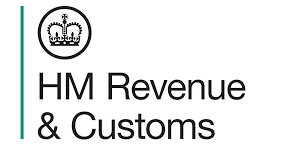HMRC SDLT: Interest and Penalties for Late or Incorrect Land Transaction Returns
Compliance: Introduction to Interest and Penalties
This section of the HMRC internal manual provides guidance on the principles and concepts related to compliance, interest, and penalties. It aims to ensure that HMRC staff understand the framework for applying interest and penalties in tax matters.
- Explains the purpose of interest and penalties in tax compliance.
- Details the circumstances under which penalties may be applied.
- Outlines the calculation methods for interest on unpaid taxes.
- Provides examples to illustrate the application of penalties.

Read the original guidance here:
HMRC SDLT: Interest and Penalties for Late or Incorrect Land Transaction Returns
Understanding Interest and Penalties for Land Transaction Tax
Interest on Unpaid Tax
When a tax payment is not made on time, interest will start to accrue. This interest begins accumulating from the date the tax was due. If you are unsure about when the tax is due, you can refer to the detailed guidance on this topic, specifically SDLTM85930. This document provides important information on interest calculations and how they apply to late taxes.
Example of Interest Calculation
– If the Land Transaction Tax (LTT) was due on 1st January and it was not paid until 1st March, the interest will accrue from 1st January until the day payment is made on 1st March.
Penalties for Late Notification and Filing
There are different types of penalties that may apply if you do not properly notify HMRC or if you submit your Land Transaction returns late. Below are the main types of penalties you might face:
Fixed Penalties
– These are set amounts that you will owe if you fail to notify HMRC about a tax liability in time or if you submit the necessary documents after the deadline.
Tax Geared Penalties
– This type of penalty is calculated based on the amount of tax owed. The higher the tax, the higher the penalty. This means that if you owe a significant amount of tax, your penalty could also be substantial.
Daily Penalties
– If you have not submitted your Land Transaction return after a deadline, you may incur daily penalties. This will add to the total amount due every day that the return remains unfiled.
Penalties for Incorrect Returns
– If you submit a return that contains errors or misleading information, HMRC will impose penalties on top of interest and fixed penalties. It is essential that all information submitted to HMRC is accurate and correct.
Additional Guidance on Penalties
HMRC provides comprehensive guidance on penalties related to compliance issues. For a more detailed understanding of how they assess penalties and the specific circumstances that can lead to them, you can visit this link: Compliance Handbook. This resource is useful for both compliant taxpayers and those who are facing challenges with their tax submissions.
Important Considerations
– It is always advisable to submit land transaction returns on time to avoid any penalties.
– Make sure all information is accurate to prevent incurring penalties for incorrect returns.
– If there are extraordinary circumstances that prevent on-time submissions or accurate filings, reach out to HMRC as soon as possible to explain your situation.
How to Avoid Interest and Penalties
To avoid facing interest charges and penalties for late filings or inaccurate returns, follow these steps:
Know Your Deadlines
– Familiarise yourself with the deadlines for submitting land transaction returns. Keep a calendar or set reminders to ensure you don’t miss these important dates.
Gather Required Information Early
– Ensure you have all the necessary documentation and information before preparing your return. This process includes property details, tax calculations, and any additional supporting evidence required.
Double Check Your Returns
– Before submitting your return, double-check everything for accuracy. This includes property price, buyer details, and all calculations. Mistakes could lead to delays and possible penalties.
Keep Records
– Maintain thorough records of all correspondence with HMRC, as well as copies of submitted returns. This documentation can be vital if any disputes arise regarding your submissions.
Seek Professional Advice
– Consider consulting with a tax advisor or professional if you are uncertain about any aspects of the land transaction tax. They can guide you through the process and help ensure compliance.
Conclusion on Compliance
Adhering to the rules for submitting land transaction returns and paying taxes on time is essential to avoiding interest charges and penalties. Understanding both the structure and the reasons behind these penalties can help individuals and businesses manage their tax responsibilities effectively.







